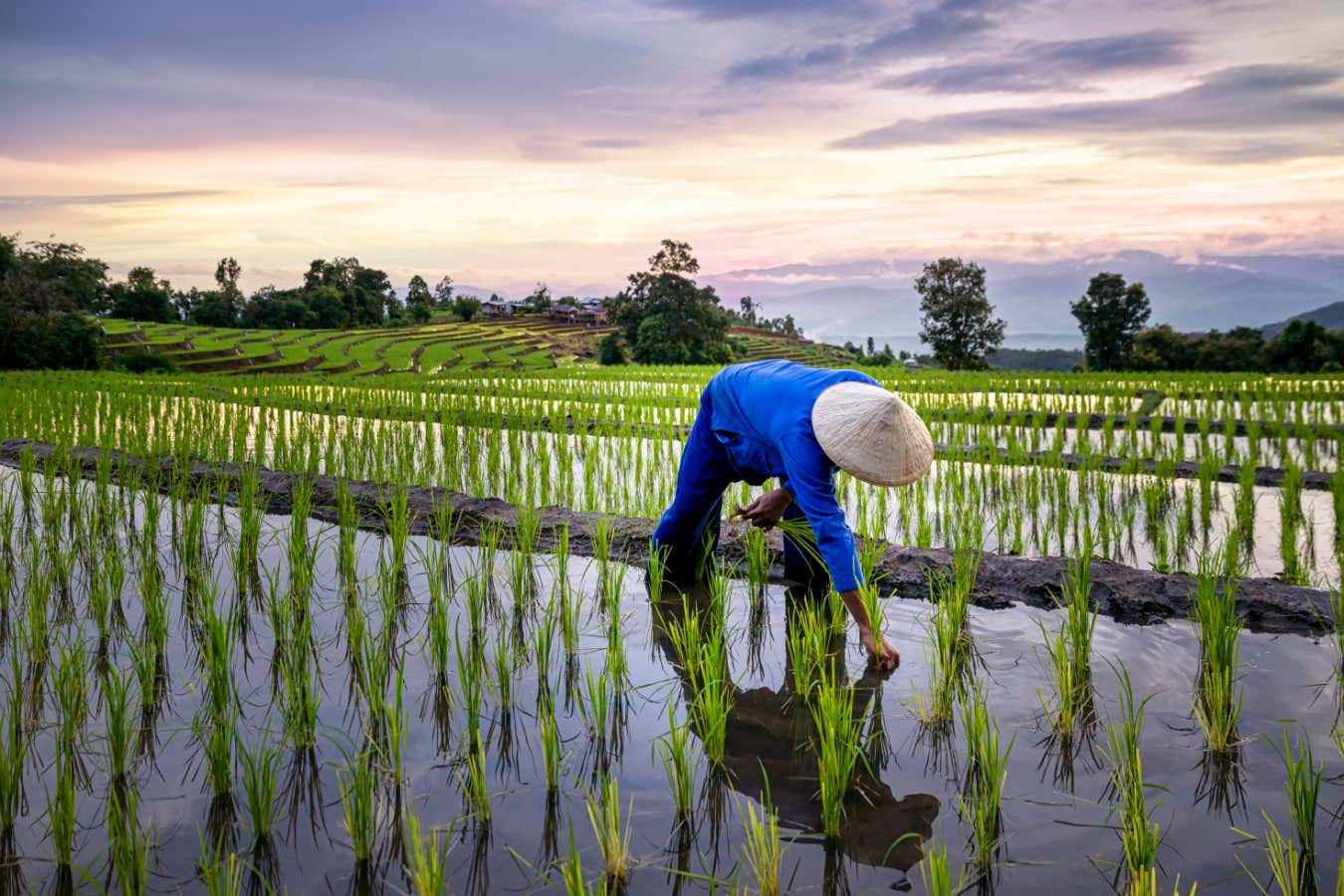Using traditional crossbreeding, researchers have created a new strain of rice that produces much less methane, a potent greenhouse gas, when it is grown in flooded fields
By James Woodford
3 February 2025
Rice fields are a major source of methane emissions
Thirawatana Phaisalratana/iStockphoto/Getty Images
A new variety of rice created by simple crossbreeding could reduce the crop’s emissions of methane, a powerful greenhouse gas, by nearly three-quarters.
Rice growing is responsible for around 12 per cent of anthropogenic release of methane, a gas that has a warming effect 25 times stronger than that of carbon dioxide.
Read more
Spreading rock dust on farms boosts crop yields and captures CO2
Advertisement
The emissions come from soil microbes in the flooded paddy fields where rice is grown. These organisms break down chemicals known as root exudates released by the plants, producing nutrients that the plants can use, but also making methane in the process.
To learn more about factors affecting the production of methane from rice roots, Anna Schnürer at the Swedish University of Agricultural Sciences and her colleagues grew two strains of rice in a laboratory: a Japanese cultivar called Nipponbare with average methane emissions and a genetically modified strain with low methane emissions called SUSIBA2.
SUSIBA2 produced less fumarate, a root exudate known to be a key driver of methane emissions, than Nipponbare. But when both strains were treated with oxantel, a chemical that inhibits the breakdown of fumarate by bacteria, the SUSIBA2 strain still produced less methane. This meant there must be another factor causing the difference between the varieties.
